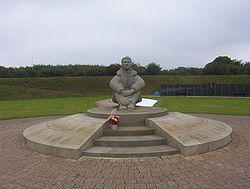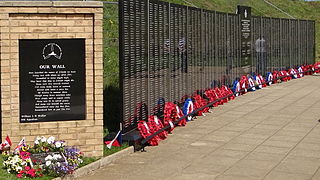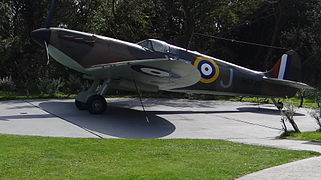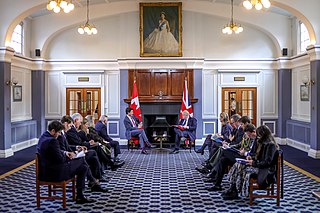
Royal Air Force Northolt or more simply RAF Northolt is a Royal Air Force station in South Ruislip, 2 nautical miles from Uxbridge in the London Borough of Hillingdon, western Greater London, England, approximately 6 mi (10 km) north of Heathrow Airport. As London VIP Airport, the station handles many private civil flights in addition to Air Force flights.
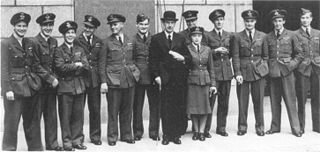
The Few were the airmen of the Royal Air Force (RAF) and the aviators of the Fleet Air Arm, Royal Navy (RN) who fought the Battle of Britain in the Second World War. The term comes from Winston Churchill's phrase "Never, in the field of human conflict, was so much owed by so many to so few." It also alludes to Shakespeare's famous speech in his play, Henry V: "We few, we happy few, we band of brothers..."

Capel-le-Ferne is a village on the White Cliffs of Dover, near Folkestone in Kent, England. Its name derives from a medieval French term meaning "chapel in the ferns". In 2011 the village had a population of 1,884. It is perched on top of the White Cliffs of Dover.

The Battle of Britain Monument in London is a sculpture on the Victoria Embankment, overlooking the River Thames, which commemorates the individuals who took part in the Battle of Britain during the Second World War.

Number 601 Squadron is a squadron of the RAF Reserves, based in London. The squadron took part in the Battle of Britain, during which the first Americans to fly in World War II were members of the squadron.
Joseph Inkerman Johnson was born in 1914 in Hulcote, Northamptonshire. He joined the RAF in June 1935 as an Aircrafthand (Carpenter). He was later remustered as an Airman-in training Pilot and won his wings on 11 August 1939 — three weeks before Britain declared war on Germany.

The Supermarine Spitfire is a British single-seat fighter aircraft used by the Royal Air Force and other Allied countries before, during, and after World War II. It was the only British fighter produced continuously throughout the war. The Spitfire remains popular among enthusiasts. Around 70 remain airworthy, and many more are static exhibits in aviation museums throughout the world.

Pilot Officer Cecil Henry Hight was a New Zealand born fighter pilot who served with the Royal Air Force during World War II. He was killed in action during the Battle of Britain.
RNAS Capel was a First World War airship station near Folkestone, Kent.
Keith Ashley Lawrence was a New Zealand-born British Royal Air Force Officer, who was one of the last surviving members of "The Few".
Flight Lieutenant William Louis Buchanan Walker, AE was, at the time of his death, the oldest surviving pilot from the Battle of Britain. His poem "Our Wall" about the Battle of Britain is inscribed on a special plinth aside the Christopher Foxley-Norris Memorial Wall of the Battle of Britain Memorial, Capel-le-Ferne, Kent.
These awards were created to celebrate design excellence in Kent and were first staged in 2003 and are usually held every two years. They were then renamed 'Kent Design and Development Awards' in 2012. Then have stayed as the 'Kent Design and Development Awards' in 2014.
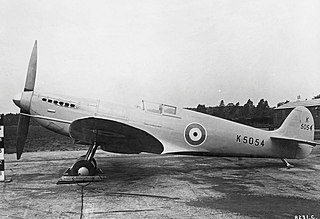
The Supermarine Spitfire was developed in the mid-1930s as a short-range, high-performance interceptor aircraft by chief designer R. J. Mitchell.
